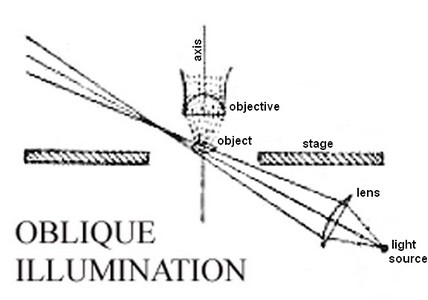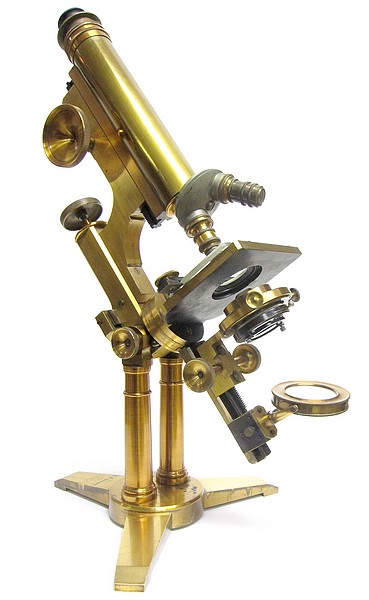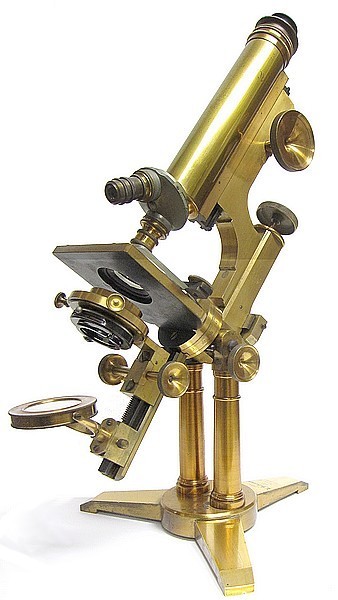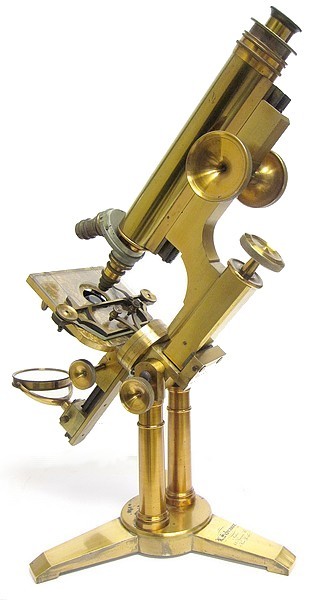
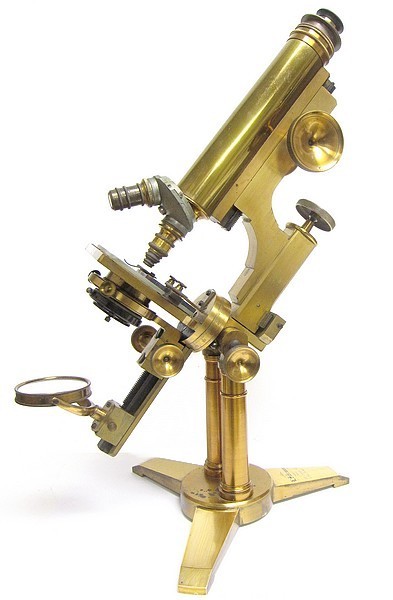
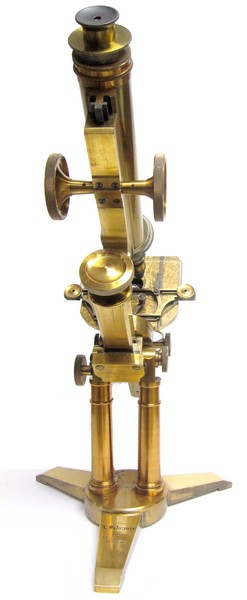
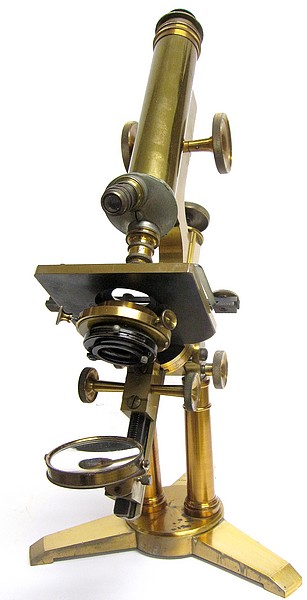
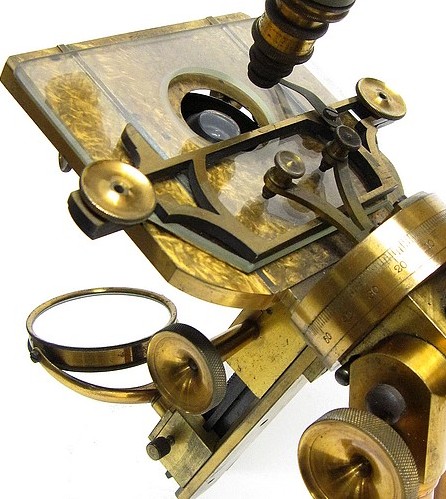
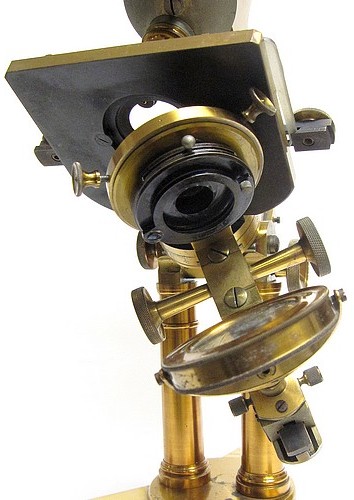
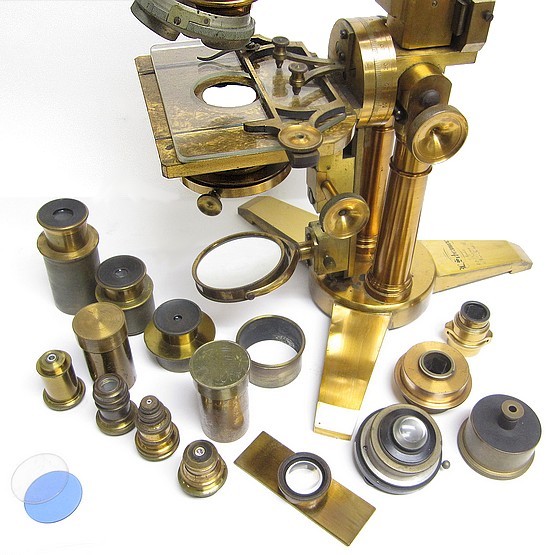
The accessories supplied with this microscope include two Hartnack objectives, an objective by W. Wales with canister, another unsigned objective marked 1/4 with canister, three eyepieces, a substage Abbe condenser with iris diaphragm and filter holder, two glass filters, a substage aperture stop holder with one stop, a brass substage adapter, a live box, a double objective changer, and for polarization work a substage polarizer and an analyzer that mounts above an objective. The stage utilizes a brass and glass slide carrier.
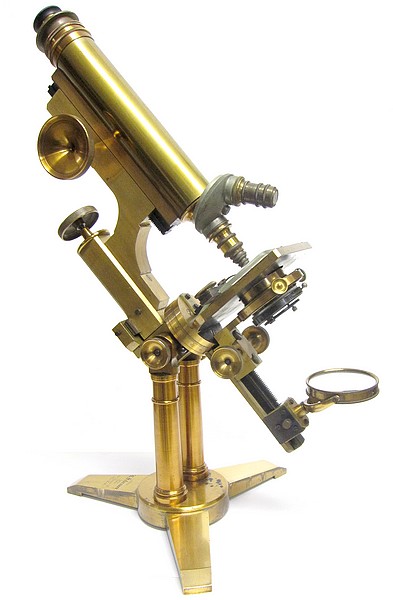
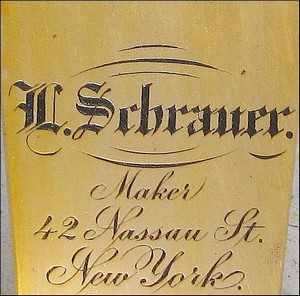
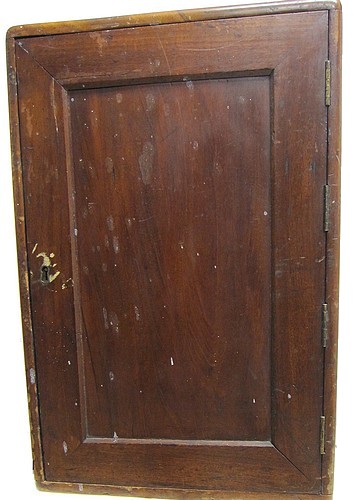
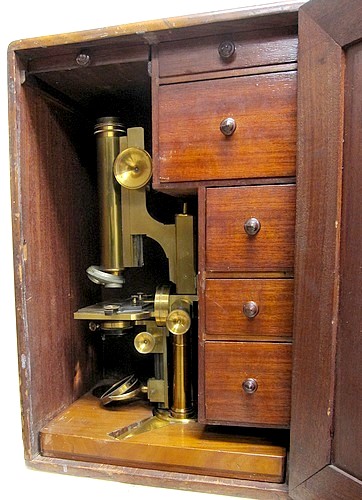
This microscope is probably the largest model microscope that Schrauer ever produced. It is quite massive measuring about 18-inches in height inclined as shown in the photos with the draw-tube closed. It borrows some features present in Zentmayer’s American Centennial model, which was introduced in 1876. Among these features are the mounting of the microscope on a double pillar attached to a tripod base. However, unlike with the American Centennial where the fine adjustment moves the tube with the limb remaining stationary, the fine adjustment on this Schrauer moves both the limb and the tube together. The microscope’s sliding brass and glass slide carrier is also reminiscent of those used on Zentmayer microscopes. The most notable Zentmayer innovation found on this microscope is the calibrated swinging substage. While Zentmayer was not the first manufacturer to incorporate a swinging substage, the main purpose of which was to allow oblique illumination, he popularized this innovation with the introduction of the American Centennial model. One other feature of this microscope includes a centerable sub-stage that focuses by rack and pinion
